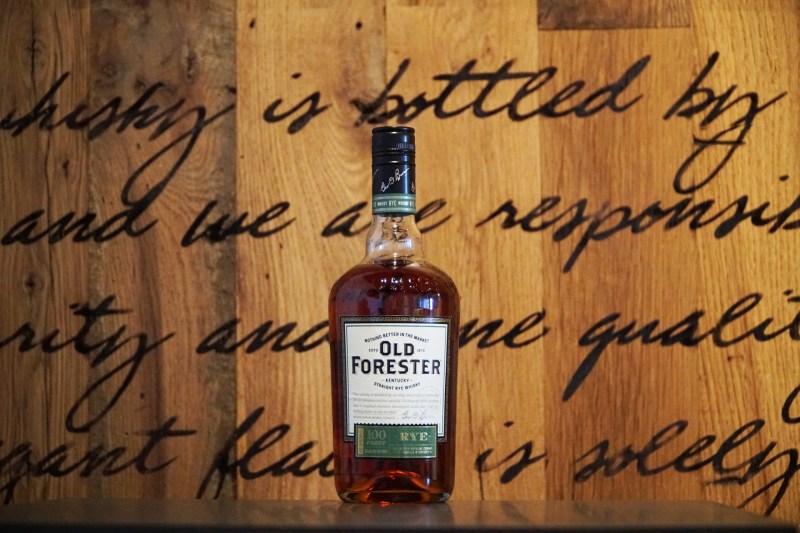
Known for their range of delicious bourbons, Old Forester (whose tag line is “America’s First Bottled Bourbon), has released their first new grain recipe in almost 150 years, Old Forester Kentucky Straight Rye.
“Our signature bourbon recipe has done this brand proud through Prohibition, World War, and changing consumer palates,” Campbell Brown, Old Forester president and great-great-grandson of founder George Garvin Brown, said in a statement. “This January we will create a new tradition with a Kentucky Straight Rye that will capture the hearts and excite the palates of experienced rye drinkers and curious whisky enthusiasts alike.”
The new expression — made from a grain bill of 65 percent rye, 20 percent malted barley, 15 percent corn, and Old Forester’s proprietary yeast strain — was created by master distiller Chris Morris and master taster Jackie Zykan and based on Normandy Rye, a brand which Brown-Forman acquired in 1940. While Normandy Rye no longer exists, its flavor legacy will live on thanks, in part, to this new rye.
“Throughout history, rye whisky showcased a balanced grain recipe,” Morris said in a statement. “The high proportion of malted barley in this traditional recipe allows for a wholly natural fermentation process.”
Bottled at 100 proof, Old Forester has brown sugar, floral notes, and some light citrus notes on the nose. A hint of the rye spice to come underpins the nose before coming immediately to the forefront on the palate. Cinnamon-topped baked apples are prevalent, with pepper and other baking spices mixed in. Sweet, but not overly so, notes of anise, oak, and some slight hints of maple come through, leading into a long, dry finish that has echoes of the floral notes on the nose mixed with just a hint of honey.
This is the second new release from Brown-Forman, as they have also recently announced the second expression in their Coopers’ Craft line, Barrel Reserve. Read more about the release here.
Old Forester Kentucky Straight Rye will be available starting February 1 and will retail for around $23, to match the price of Old Forester 100 Proof Bourbon. Like rye whiskey, but like it better in cocktails? You can always pick up some extra ingredients from Old Forester’s Cocktail Provisions line. Find out more about the line here.
Editors' Recommendations
- All the new whiskies you need to drink this fall
- With a ‘Kentucky Affogato,’ Derby Day Has Never Been So Sweet
- Wild Turkey Releases Two New Limited Edition Whiskeys
- Big Whiskey News: Brown-Forman Early Times is Sold to Sazerac
- A Comparison of 3 New Batches of Barrel Strength Whiskey











